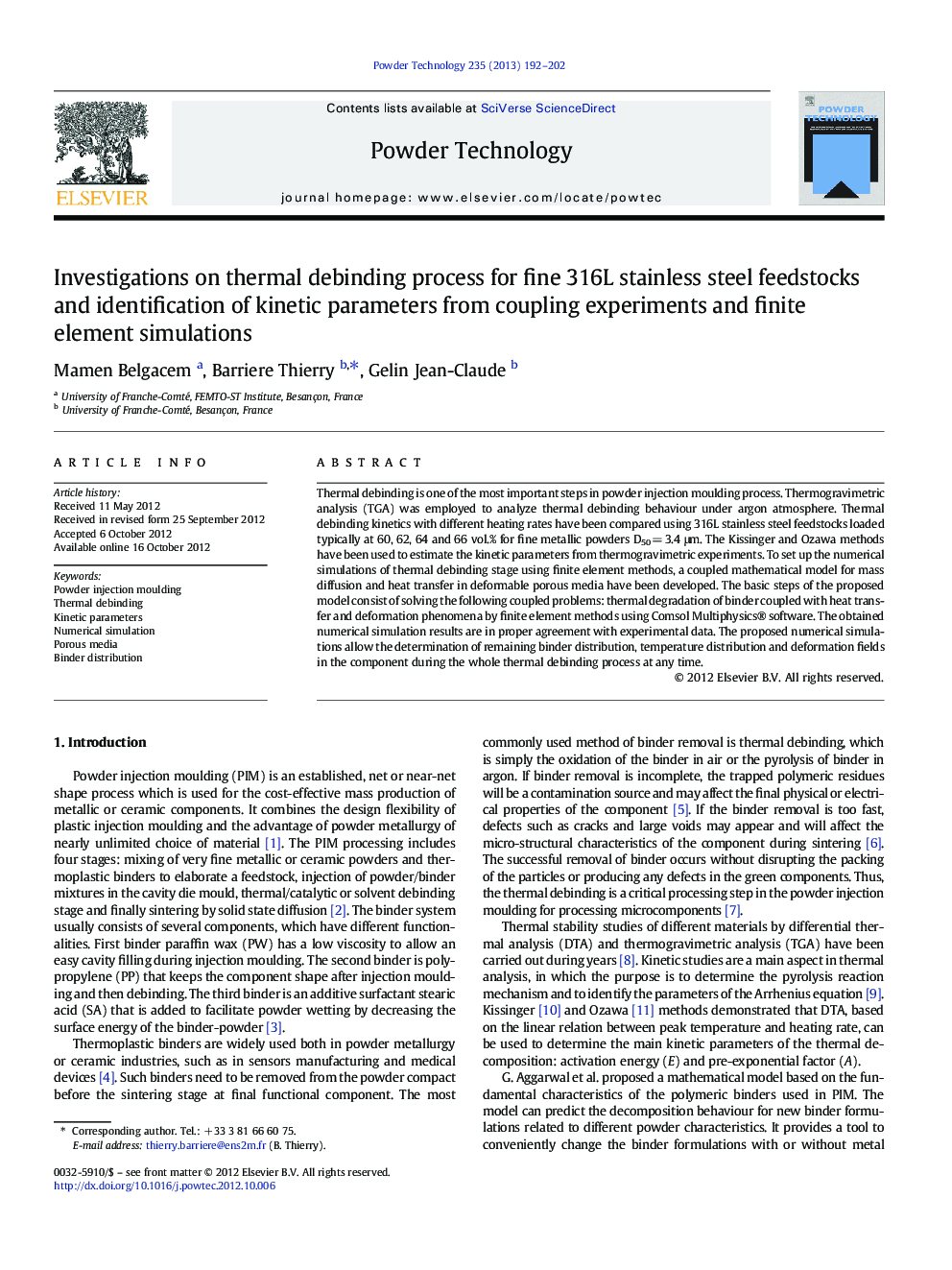| کد مقاله | کد نشریه | سال انتشار | مقاله انگلیسی | نسخه تمام متن |
|---|---|---|---|---|
| 236632 | 465682 | 2013 | 11 صفحه PDF | دانلود رایگان |

Thermal debinding is one of the most important steps in powder injection moulding process. Thermogravimetric analysis (TGA) was employed to analyze thermal debinding behaviour under argon atmosphere. Thermal debinding kinetics with different heating rates have been compared using 316L stainless steel feedstocks loaded typically at 60, 62, 64 and 66 vol.% for fine metallic powders D50 = 3.4 μm. The Kissinger and Ozawa methods have been used to estimate the kinetic parameters from thermogravimetric experiments. To set up the numerical simulations of thermal debinding stage using finite element methods, a coupled mathematical model for mass diffusion and heat transfer in deformable porous media have been developed. The basic steps of the proposed model consist of solving the following coupled problems: thermal degradation of binder coupled with heat transfer and deformation phenomena by finite element methods using Comsol Multiphysics® software. The obtained numerical simulation results are in proper agreement with experimental data. The proposed numerical simulations allow the determination of remaining binder distribution, temperature distribution and deformation fields in the component during the whole thermal debinding process at any time.
Degradation of fine 316L stainless steel powders mixed with a multi-component binder system has been studied through TGA and DTA analyses under an argon atmosphere. A three-dimensional simulation of thermal debinding based on coupled mathematical model has been developed. The simulation results are in proper agreement with the experimental ones.Figure optionsDownload as PowerPoint slideHighlights
► Kinetic model for multi-reaction steps in thermal debinding is developed.
► 2D and 3D FE analyses based on the kinetic model have been implemented and realized.
► Kinetic parameters have been measured and identified using inverse methods.
► Activation energy evolution has been established using Kissinger and Ozawa methods.
► Powder volume loading effect on thermal debinding process has been analyzed.
Journal: Powder Technology - Volume 235, February 2013, Pages 192–202